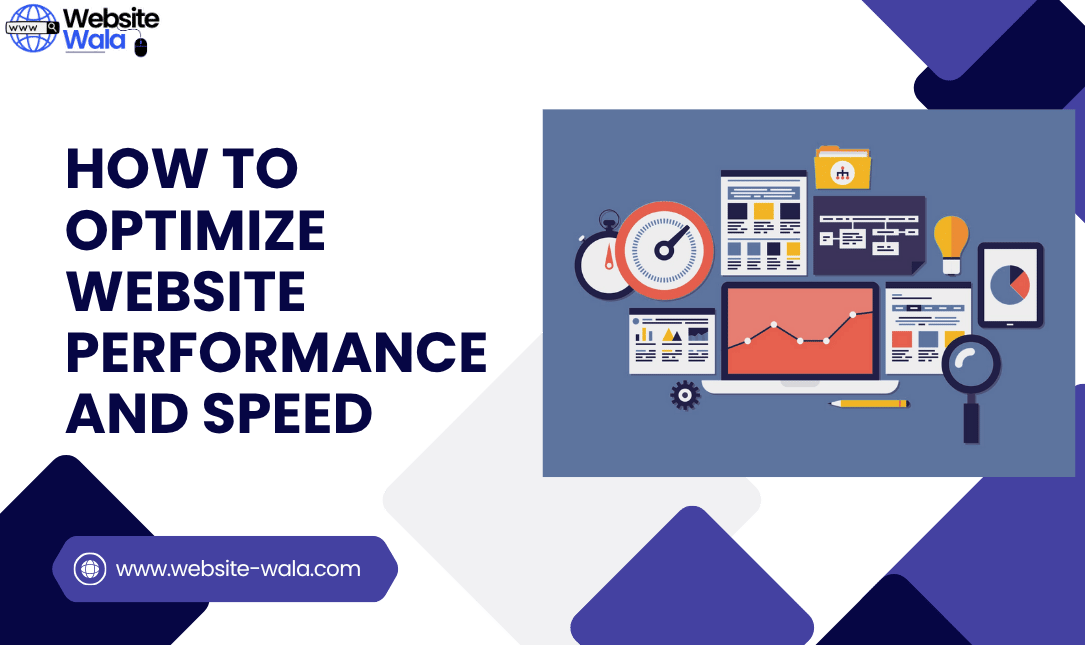
Learn How to Optimize Website Performance and Speed with proven techniques to enhance user experience, reduce loading time, and boost traffic.
How to Optimize Website Performance and Speed: A Comprehensive Guide
In today’s digital era, website performance and speed are crucial for both user experience and search engine rankings. Slow-loading websites can frustrate visitors, reduce engagement, and negatively impact your website’s visibility on search engines. Understanding how to optimize website performance and speed is essential for businesses, bloggers, and eCommerce platforms aiming to drive traffic and increase conversions. This guide will cover practical strategies, website optimization techniques, and actionable tips to improve performance and enhance user experience.
Why Website Performance and Speed Matter
Before diving into optimization techniques, it’s essential to understand why website speed matters. Research shows that users expect websites to load in under three seconds. Slow websites increase bounce rates, reduce dwell time, and directly affect search engine rankings. Additionally, faster websites improve user experience, which helps to drive traffic and increase traffic organically.
Optimizing your website not only satisfies users but also signals to search engines that your site is reliable and well-maintained. Consequently, how to optimize website performance and speed is critical for sustaining online success.
Key Factors Affecting Website Performance
To effectively optimize website, you need to identify elements that impact performance:
-
Hosting Quality: A slow server directly affects your website loading time. Choose reliable hosting services with high uptime and fast response.
-
Large Media Files: High-resolution images, videos, and graphics can significantly slow down your site. Proper compression is key.
-
Unoptimized Code: Excessive scripts, CSS, and JavaScript can increase page load times. Minifying code helps.
-
Caching Issues: Proper caching can drastically reduce server load and improve website speed.
-
Plugins and Third-Party Scripts: Overusing plugins or external scripts can slow your website and degrade performance.
Understanding these factors is the first step in learning how to optimize website performance and speed efficiently.
Proven Website Optimization Techniques
1. Optimize Images and Media
Images often account for the largest portion of website loading time. Use formats like WebP for smaller file sizes without compromising quality. Implement lazy loading so images load only when users scroll, reducing initial page load times and improving user experience.
2. Minimize HTTP Requests
Every element on your website, such as CSS files, JavaScript, and images, triggers an HTTP request. Reducing these requests can significantly improve performance. Combine CSS and JavaScript files, and remove unnecessary plugins to streamline your website.
3. Enable Browser Caching
Caching stores frequently used website data on a user’s browser, reducing server load and improving page load speed on repeat visits. Configuring caching rules is a simple yet effective website speed optimization technique.
4. Use a Content Delivery Network (CDN)
A CDN distributes your website content across multiple servers worldwide, ensuring faster access for global visitors. By leveraging a CDN, you can enhance user experience, reduce latency, and increase traffic from diverse locations.
5. Minify and Compress Files
Minifying CSS, HTML, and JavaScript removes unnecessary characters, spaces, and comments, reducing file sizes. Similarly, compressing files using Gzip or Brotli reduces data transfer, helping optimize website speed efficiently.
6. Optimize Website Code and Database
Clean code, optimized databases, and efficient server queries are crucial for website optimization. Regularly check for unused plugins, redundant scripts, and slow queries to improve performance.
7. Mobile Optimization
With mobile traffic surpassing desktop, responsive design is essential. A mobile-friendly site improves user experience, reduces bounce rates, and positively impacts search engine rankings.
8. Monitor Website Performance Regularly
Use tools like Google PageSpeed Insights, GTmetrix, and Pingdom to analyze your website speed. Monitoring helps you identify bottlenecks and implement website performance tips effectively.
Advanced Strategies to Further Improve Performance
-
Implement Accelerated Mobile Pages (AMP): AMP reduces mobile page load times and enhances user experience.
-
Use HTTP/2: Modern protocols like HTTP/2 allow faster loading of multiple files simultaneously.
-
Reduce Redirects: Excessive redirects increase website loading time. Keep them minimal.
-
Defer JavaScript Loading: Deferring scripts ensures that they load after the main content, boosting website speed.
These advanced methods are particularly useful for large-scale websites or high-traffic platforms aiming to drive traffic and maintain optimal website performance.
Benefits of Optimized Website Performance
Learning how to optimize website performance and speed provides numerous advantages:
-
Enhanced User Experience: Faster websites keep visitors engaged and reduce bounce rates.
-
Improved Search Engine Rankings: Google prioritizes fast-loading websites, directly impacting visibility.
-
Increased Traffic and Conversions: Optimized websites retain visitors longer, encouraging engagement and repeat visits.
-
Reduced Server Load: Efficient website optimization techniques minimize resource consumption and hosting costs.
By focusing on these benefits, businesses can maintain a competitive edge online.
Conclusion
Understanding how to optimize website performance and speed is no longer optional—it’s a necessity for any website aiming to succeed in the digital space. Implementing effective website performance tips and website speed optimization strategies ensures faster load times, enhanced user satisfaction, and better search engine rankings. From compressing images to leveraging CDNs, every optimization technique contributes to improving performance and enhancing user experience.
Investing time and effort in website speed and performance optimization allows you to drive traffic, increase traffic, and ultimately boost conversions. Whether you are a small business, blogger, or eCommerce platform, mastering how to optimize website performance and speed is the key to long-term digital success.























